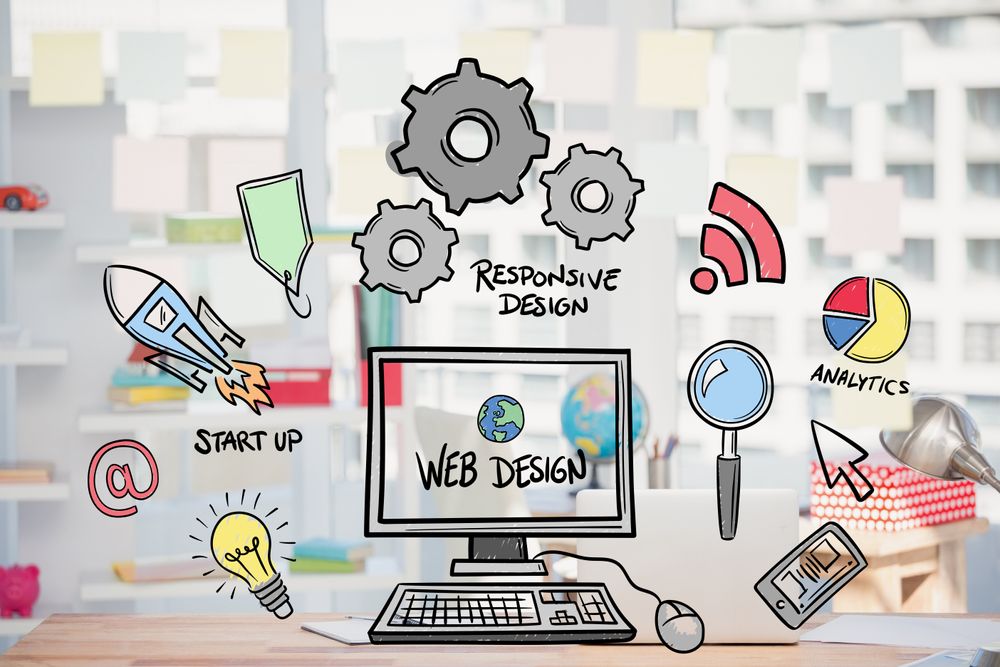How Website Design in copyright Can Improve Your Website’s User Experience
Achieve Online Success With User-Friendly Site Design
In the progressively competitive electronic landscape, the style of an internet site can be a crucial consider identifying a company's success. User-friendly design not only boosts the general individual experience but also affects crucial metrics such as retention, interaction, and conversion prices. By focusing on intuitive navigating and availability, organizations can promote a more comprehensive atmosphere that attract a wider audience. Comprehending the specific principles and attributes that contribute to effective layout requires a better exam of current patterns and ideal practices, which might disclose opportunities for considerable enhancement.
Relevance of Customer Experience
User experience (UX) plays a pivotal role in the success of a website, as it straight affects customer contentment and involvement. A favorable UX guarantees that visitors can browse the website effortlessly, access information promptly, and full desired actions, such as purchasing or authorizing up for an e-newsletter, without frustration.
In an electronic landscape where competition is tough, a website that focuses on UX can significantly boost brand loyalty and retention. Customers are a lot more likely to go back to a site that offers a smooth experience, creating a cycle of repeat visits and raised consumer lifetime worth. Efficient UX design can decrease bounce rates, as customers are less likely to leave a site that satisfies their demands effectively.
Moreover, search engines progressively consider individual experience variables when ranking web sites. Aspects such as web page load speed, mobile-friendliness, and user-friendly navigating can affect a site's presence in search outcomes. By focusing on UX, companies not just enhance customer interactions however additionally improve their online presence and integrity. Thus, purchasing customer experience is essential for accomplishing lasting success in the digital market.
Trick Concepts of User-Friendly Layout
An effective straightforward layout hinges on numerous key principles that enhance usability and availability. Most importantly is simpleness; a clutter-free interface allows customers to browse effortlessly, decreasing cognitive load. This principle emphasizes the importance of clear and succinct web content, allowing customers to locate info quickly without unneeded interruptions.
Consistency is another essential element. Consistent use of font styles, layouts, and shades promotes knowledge and develops trust fund. Customers must feel comfy as they discover different areas of the web site, knowing that similar elements symbolize related capabilities.
Reliable typography likewise plays a vital role in user-friendly design. Readable fonts, proper dimensions, and sufficient spacing make certain that material is conveniently legible throughout different tools. Integrating instinctive visual power structures aids customers determine crucial details and actions at a look.

Essential Functions for Navigating
Reliable navigation is vital for any kind of user-friendly web site, as it straight influences the general user experience. A well-structured navigation system enables individuals to situate info swiftly and successfully, reducing irritation and increasing engagement.
One necessary attribute is a clear and instinctive menu that categorizes content rationally - website design copyright. This food selection needs to be conveniently available from every web page, often positioned at the top or on the side of the site. Furthermore, integrating breadcrumb navigation helps users recognize their area within the website pecking order and makes it easier to backtrack
Look capability is an additional essential element, enabling users to find details web content without sorting with multiple pages. This feature should be prominently displayed and receptive to variations in input.
Moreover, a mobile-responsive design makes certain that navigating remains seamless across tools. As mobile usage remains to increase, menus should adjust to different display sizes without compromising capability.
Finally, aesthetic hints such as highlighting the active web page and using hover impacts can enhance customer interaction. By incorporating these important features, internet site designers can develop a navigational experience that is not just easy to use but additionally motivates expedition and retention.
Ease Of Access Considerations
Accessibility considerations are essential to producing an easy to use website that deals visit this page with all people, no matter their capabilities or disabilities (website design copyright). Internet sites should be made to guarantee that users with aesthetic, acoustic, cognitive, or electric motor problems can involve with content successfully. This starts with adherence to the Web Web Content Accessibility Guidelines (WCAG), which supply a framework for making digital material extra accessible
Trick techniques include making use of descriptive different message for images, guaranteeing color comparison proportions fulfill accessibility requirements, and providing inscriptions for multimedia elements. In addition, the navigation ought to be instinctive, enabling individuals to tab with web links and interactive aspects conveniently. Executing keyboard navigation is vital for those incapable to use a mouse.
Furthermore, clear and concise language improves understanding for individuals with cognitive restrictions. Kinds should be straightforward, with labels and instructions that are simple to recognize. Regular accessibility testing, consisting of user feedback from people with handicaps, can help boost and recognize obstacles useful content functionality.
Determining Design Success

Customer responses studies and use screening are essential in assessing the effectiveness of design components. These approaches permit developers to gather direct input from customers, identifying pain factors and locations for improvement. In addition, tracking heatmaps can reveal where customers click most often, aiding to notify design adjustments and material prioritization.
Google Analytics can track individual behavior, exposing patterns that indicate whether the style is impeding the individual or facilitating trip. Ultimately, a successful internet site design not just meets organization objectives however likewise promotes a delightful and smooth customer experience, driving interaction and commitment over time.
Final Thought
Focusing on customer experience through simplicity, user-friendly navigating, and effective comments devices not just improves individual involvement and contentment yet likewise cultivates brand name loyalty. Including important navigating features and ease of access considerations better ensures that all users can effectively engage with the site.
Sites need to be created to make certain that customers with visual, auditory, cognitive, or motor problems can involve with content properly.Determining design success involves reviewing how effectively a website reference meets its intended goals while providing a favorable user experience. Google Analytics can track customer behavior, disclosing patterns that indicate whether the design is promoting or preventing the individual trip. Eventually, an effective website layout not only fulfills company objectives however additionally fosters a smooth and enjoyable individual experience, driving involvement and commitment over time. Prioritizing user experience with simpleness, instinctive navigation, and efficient responses systems not just improves user interaction and fulfillment yet likewise promotes brand commitment.